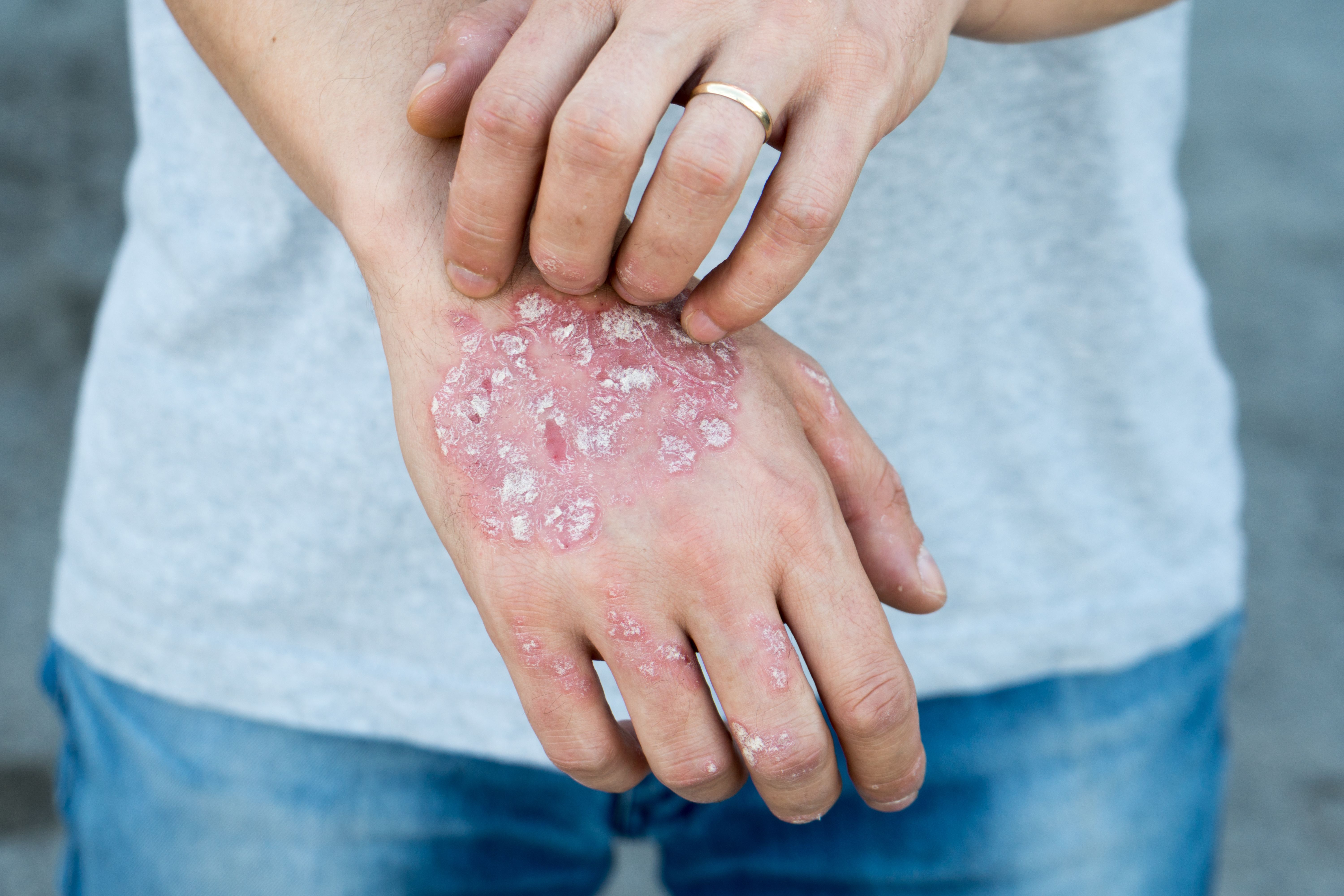Article
Variation in Psoriasis Treatment Regimens Come at a Cost
Author(s):
Due to the disease’s chronicity, the variability in treatment response and drug safety profiles, and the availability of multiple therapies, switching or discontinuing treatments is common in psoriasis.
Psoriasis is a chronic immune-mediated skin disease affecting about 3% of the US population.1 It is associated with numerous comorbidities and carries a high-cost of treatment.
Credit: Ban - Austria - stock.adobe.com.

According to a recent study, the 6-month total per-patient direct costs were estimated to be $11,291, indirect costs $2101, out-of-pocket costs to the patient $706, and productivity losses of approximately 14%.2 Although topical therapies play an important role in psoriasis treatment, they are frequently inadequate to obtain and maintain skin clearance, thus phototherapy or systemic treatments are typically employed.3
A recent retrospective cohort study published in The Journal of Dermatological Treatment evaluated real-world treatment patterns and associated costs in patients in the United States with psoriasis initiating systemic oral or biologic treatments.4 Due to the disease’s chronicity, the variability in treatment response and drug safety profiles, and the availability of multiple therapies, switching or discontinuing treatments is common in psoriasis.
This study evaluated patterns of switching, discontinuation, and non-switching in 2 cohorts of patients with psoriasis who initiated systemic therapy. It included patients if they had 1 prescription for an oral medication (apremilast, cyclosporine, methotrexate, or acitretin) or biologic medication (etanercept, infliximab, ixekizu-mab, secukinumab, brodalumab, ustekinumab, guselkumab, ada-limumab, certolizumab pegol, or tildrakizumab) during the index period.
Patients with multiple oral or biologic medications started on the index date, or patients with select comorbidities, such as rheumatoid arthritis and Crohn disease, were excluded. The researchers evaluated treatment patterns for patients initiating oral or biologic treatments separately, with apremilast further broken out as this is a newer, more costly oral therapy.
Among the oral cohort, 32% of patients discontinued their index treatment within 1 year of initiation, less than half (40%) remained on therapy, and 28% switched to another treatment, most often to biologics. Of all the oral therapies, apremilast boasted the highest persistence rate at 1 year (41%). Patients who initiated one of the remaining oral therapies had high rates of discontinuation and low rates of persistence.
The biologic cohort showed higher rates of persistence compared to the oral cohort, with 62% of patients remaining on index therapy during follow-up. Roughly one-fourth of patients (23%) switched to another treatment, typically another biologic, and 15% discontinued their treatment.
Patients who started treatment on an anti-interleukin agent were the most likely to be persistent after 1 year, whereas those who were started on an anti-tumor necrosis factor agent had higher rates of discontinuation, lower rates of persistence, and the highest rates of switching within the biologic cohort.
Costs after switching were generally higher than costs prior to switching, regardless of cohort assignment due to increased pharmacy costs with advancing treatment lines. In the oral and biologic cohorts, total per-patient per-month costs within 1 year of initiation for non-switchers, patients who discontinued, and patients who switched were $2594, $1402, and $3956, respectively, and $5035, $3112, and $5833, respectively. Notably, dose escalations were more common with biologic treatments than with oral therapies, which could potentially represent undertreatment within this cohort.
Overall, persistence was lower in the oral versus biologic cohort, and more patients in the oral cohort discontinued at 12 months versus those in the biologic cohort. This analysis suggests an imminent need for safe and effective oral options for patients with psoriasis to delay the costly switch to a biologic therapy.
About the Author
Sabina Alikhanov Palmieri, PharmD, is a clinical pharmacy specialist at Community Health Network of Connecticut in Wallingford, CT.
References
- Armstrong AW, Mehta MD, Schupp CW, Gondo GC, Bell SJ, Griffiths CEM. Psoriasis Prevalence in Adults in the United States. JAMA Dermatol. 2021 Aug 1;157(8):940-946. doi: 10.1001/jamadermatol.2021.2007. PMID: 34190957; PMCID: PMC8246333.
- Schaefer CP, Cappelleri JC, Cheng R, et al. Health care resource use, productivity, and costs among patients with moderate to severe plaque psoriasis in the United States. J Am Acad Dermatol. 2015;73(4):585–593.e583.
- Menter A, Gelfand JM, Connor C, et al. Joint American Academy of Dermatology-National Psoriasis Foundation guidelines of care for the management of psoriasis with systemic nonbiologic therapies. J Am Acad Dermatol. 2020;82(6):1445-1486. doi:10.1016/j.jaad.2020.02.044
- Sydney Thai, Joe Zhuo, Yichen Zhong, Qian Xia, Xiu Chen, Ying Bao, Devender Dhanda, Lawshia Priya & Jashin J. Wu (2023) Real-world treatment patterns and healthcare costs in patients with psoriasis taking systemic oral or biologic therapies, Journal of Dermatological Treatment, 34:1, 2176708, DOI: 10.1080/09546634.2023.2176708
Newsletter
Stay informed on drug updates, treatment guidelines, and pharmacy practice trends—subscribe to Pharmacy Times for weekly clinical insights.





